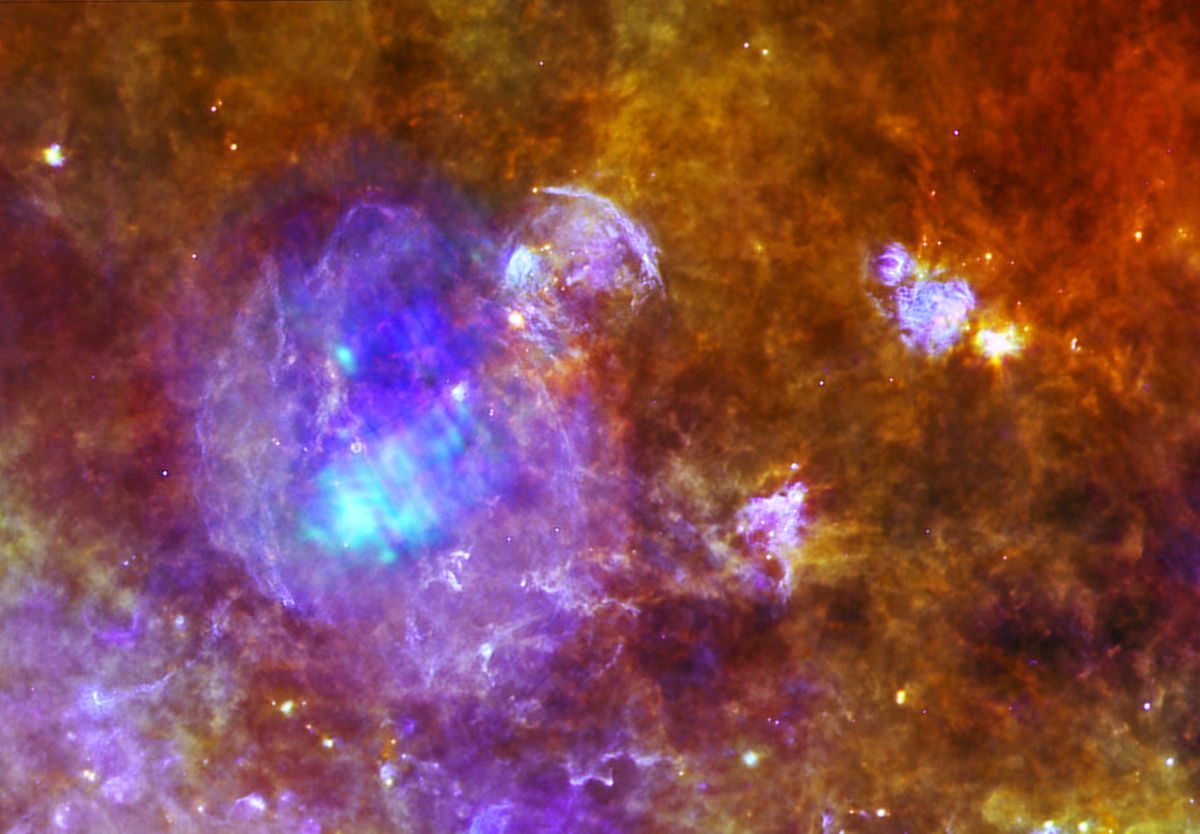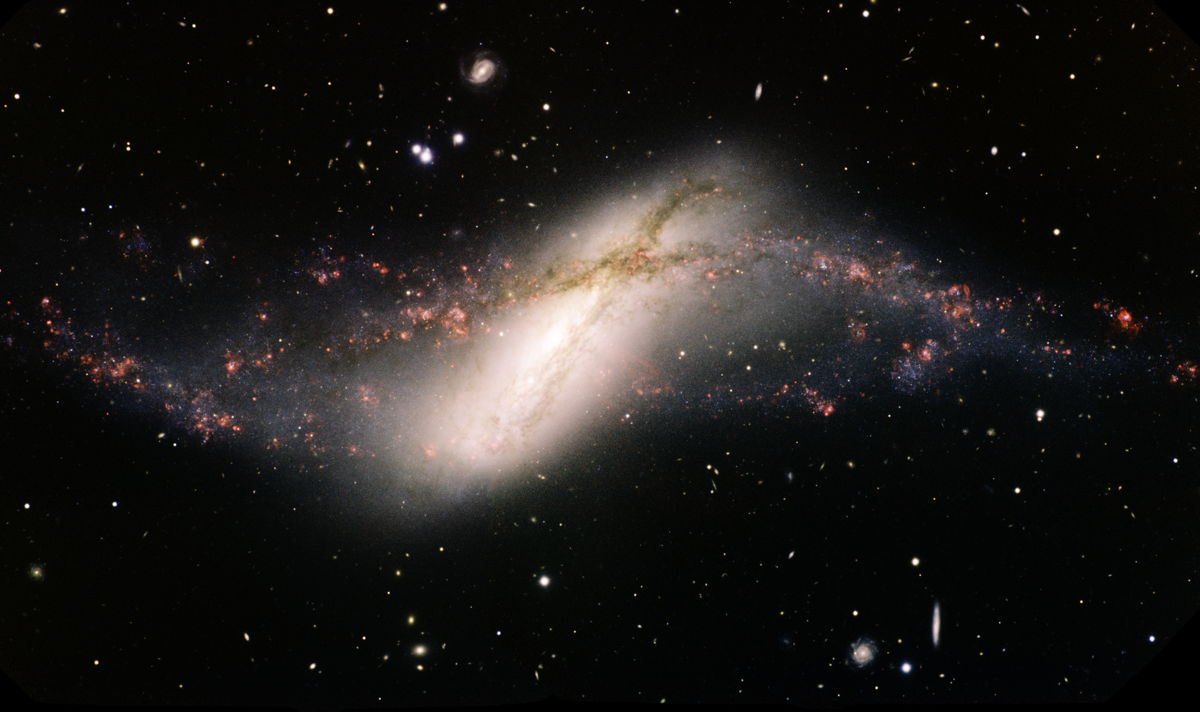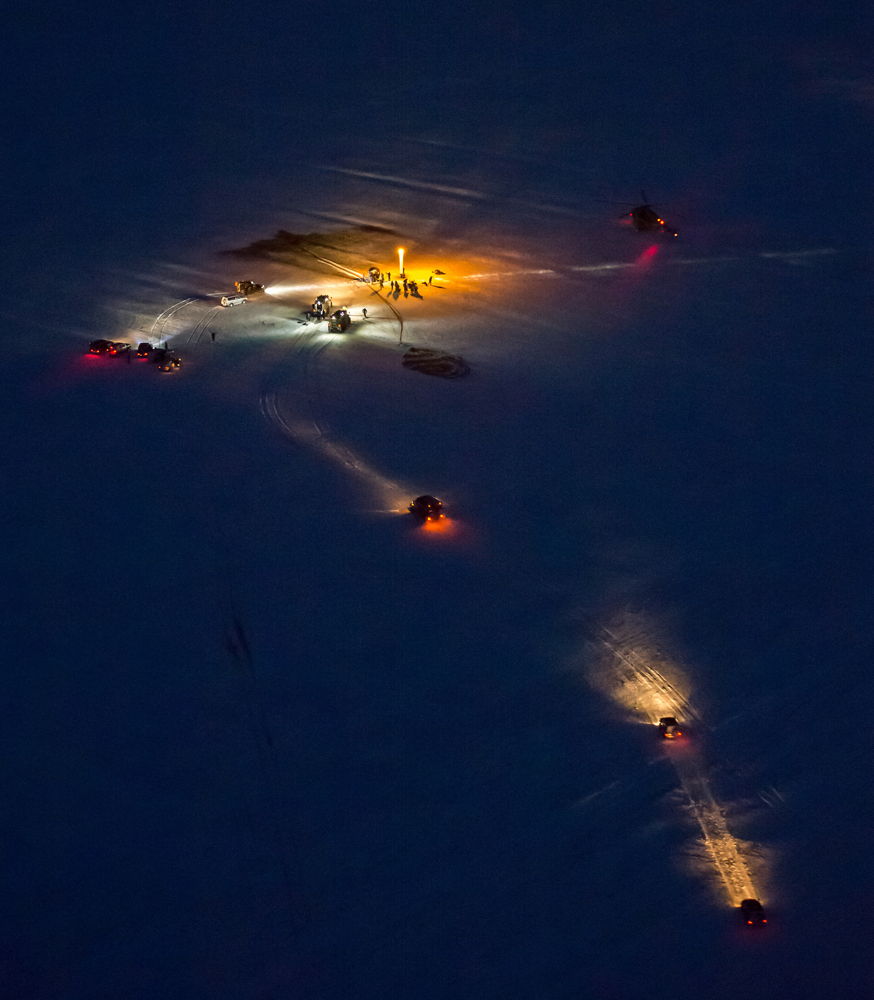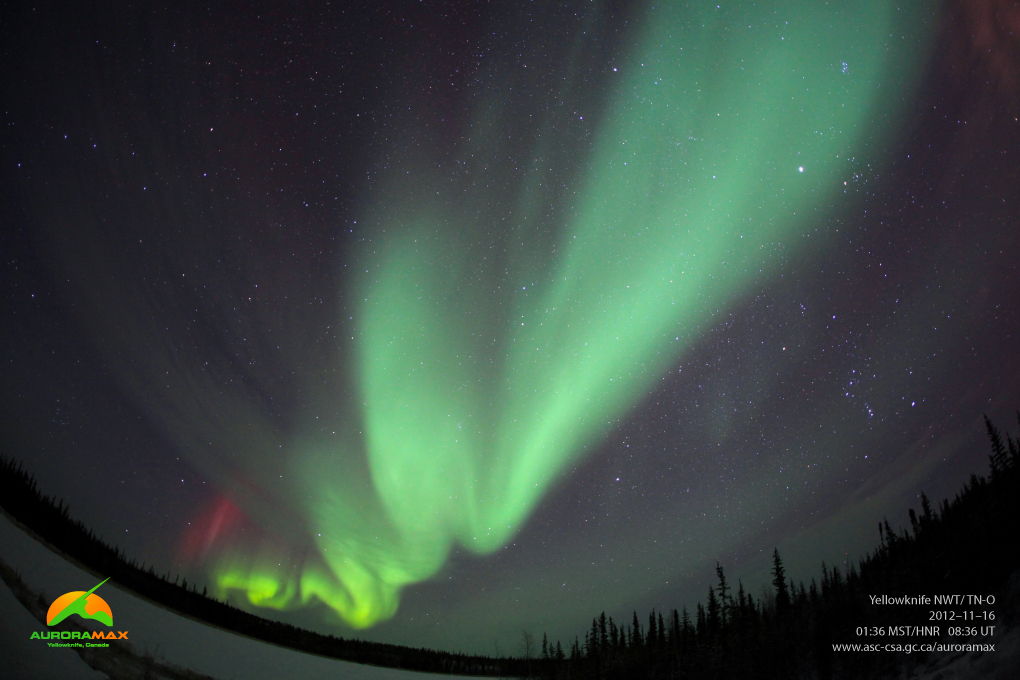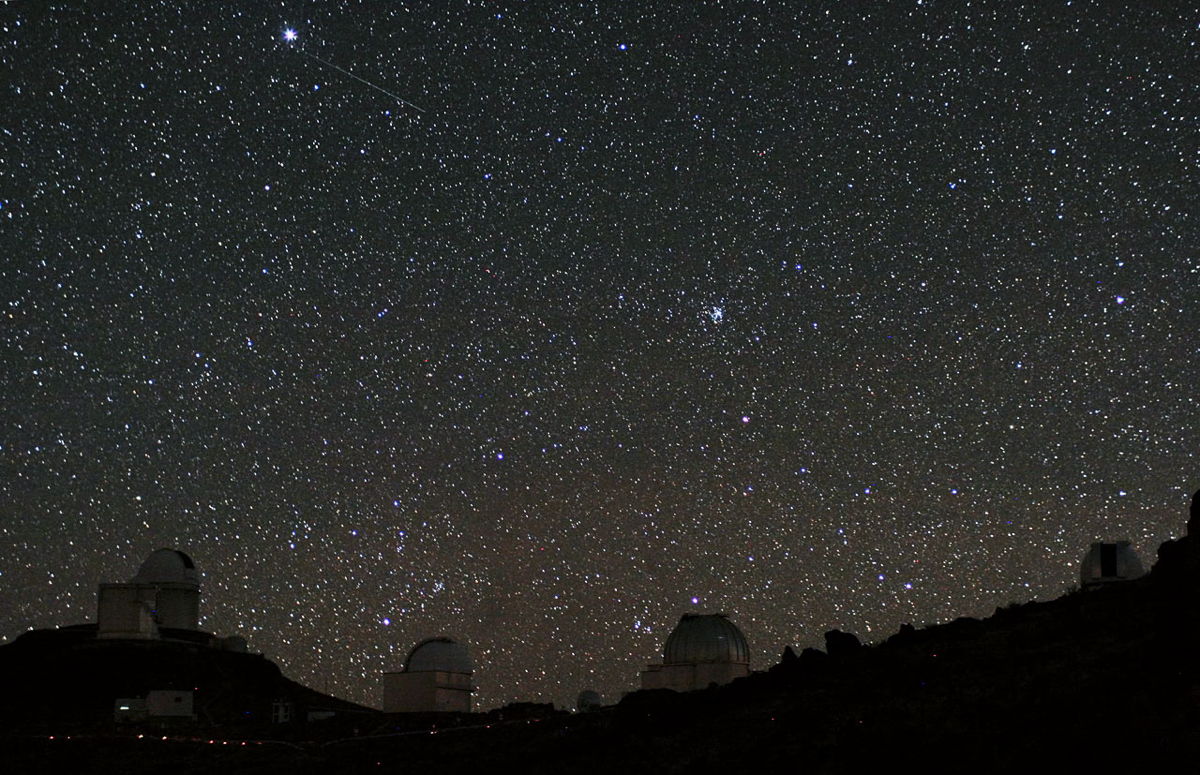Image of the Day: November 2012
Time for Flying Rockets
Thursday, November 15, 2012: An Ariane 5 rocket launched from Europe’s Spaceport in French Guiana with two telecommunications satellites, Eutelsat 21B and Star One C3, on November 10, 2012. Flight VA210 represented Ariane 5’s 52nd successful launch since December 2002.
— Tom Chao
The Color Purple
Friday, November 16, 2012: Supernova remnant W44 glows in space, seen here as the vast purple sphere on the left side of this image. W44 measures about 100 light-years across. This new image combines data from ESA's Herschel and XMM-Newton space observatories.
— Tom Chao
The Joshua Tree
Monday, November 19, 2012: Astrophotographer Jason Hullinger took some photos of the Leonid meteor shower on November 17, 2012, in Joshua Tree National Park, CA. [See full gallery.]
— Tom Chao
Get in the Ring
Tuesday, November 20, 2012: The Gemini North telescope obtained this image of the polar ring galaxy NGC 660 in August 2012. NGC 660 lies 20 million light-years away in the constellation Pisces. Polar ring galaxies appear rarely, with stars, gas, and dust orbiting in rings over their poles. Such galaxies may have formed when two galaxies merged at right angles, or when a host galaxy stripped material from a smaller galaxy.
— Tom Chao.
Ghost World
Wednesday, November 21, 2012: Reflection nebula vdB4 is a associated with young open star cluster NGC 225, often called the Sailboat Cluster, in constellation Leo Minor. Image obtained in October 2012.
— Tom Chao.
Down on the Ground
Thursday, November 22, 2012: Happy Thanksgiving from SPACE.com! The three Expedition 33 spaceflyers who returned in a Soyuz capsule on Nov. 19, 2012, likely gave many thanks for their safe return from the International Space Station. Expedition 33 Commander Sunita Williams of NASA and Flight Engineers Akihiko Hoshide of JAXA (Japan Aerospace Exploration Agency), and Yuri Malenchenko of ROSCOSMOS (Russian Federal Space Agency) landed in a remote area near the town of Arkalyk, Kazakhstan, during darkness, after spending four months in space. Vehicle headlights and an inflatable light tower illuminate the landing area.
— Tom Chao
Strange Lights
Friday, November 23, 2012: AuroraMAX automated camera tweeted this photo and wrote: "AURORAMAX GALLERY • Latest image of aurora borealis above Yellowknife, NWT taken at 01:36 MST on November 16, 2012." [More Amazing Aurora Photos of Nov. 2012]
— Tom Chao.
Breaking space news, the latest updates on rocket launches, skywatching events and more!
Things Behind the Sun
Monday, November 26, 2012: Several coronal mass ejections (CME) erupted out of the sun in just over a day on Nov. 8-9, 2012, the largest of which was a halo CME. This CME appears to have originated from an active region out of view on the left side of the sun, headed behind the sun. In a halo CME, ejected material appears to form a roughly circular shape around the sun, as it is moving directly toward or away from the observer (not because it is surrounding the sun). SDO's video of the sun in gold in extreme UV light is superimposed on a view of the corona from SOHO's LASCO instrument in red.
— Tom Chao
Mini-Bar
Tuesday, November 27, 2012: Spiral galaxy ESO 499-G37 has faint, loose spiral arms seen here as bluish features swirling around the galaxy’s nucleus. A bright elongated nucleus represents the galaxy’s most characteristic feature. Recent studies indicate that ESO 499-G37’s nucleus sits within a small bar that stretches up to a few hundreds of light-years, however that is only about a tenth the size of a typical galactic bar.
— Tom Chao
Looking for Clues
Wednesday, November 28, 2012: The ESO 3.6-metre telescope with the HARPS spectrograph and the space telescope CoRoT have been captured in the same shot. The High Accuracy Radial velocity Planetary Search (HARPS) spectrograph, an exoplanet hunter, is an instrument on ESO’s 3.6-meter telescope at the left of the photo. The light trail above is not a meteor but rather CoRoT, the Convection Rotation and planetary Transits space telescope. CoRoT searches for planets by stars that dim when planets pass in front of them — the transit method. On the night that this photograph was taken, HARPS was being used to follow up exoplanet candidates detected by CoRoT.
— Tom Chao

Space.com is the premier source of space exploration, innovation and astronomy news, chronicling (and celebrating) humanity's ongoing expansion across the final frontier. Originally founded in 1999, Space.com is, and always has been, the passion of writers and editors who are space fans and also trained journalists. Our current news team consists of Editor-in-Chief Tariq Malik; Editor Hanneke Weitering, Senior Space Writer Mike Wall; Senior Writer Meghan Bartels; Senior Writer Chelsea Gohd, Senior Writer Tereza Pultarova and Staff Writer Alexander Cox, focusing on e-commerce. Senior Producer Steve Spaleta oversees our space videos, with Diana Whitcroft as our Social Media Editor.

